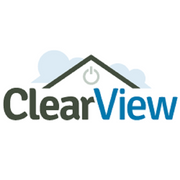An Internet Education Primer

The workings of the intangible internet can seem mysterious and arbitrary, but it’s important to understand how internet access is provided and sustained when choosing your internet service and package. Internet as a utility has seen many different types of connection, dating back to dial-up and now reaching new speeds with fiber. Clear Creek Communications has been supplying telecommunications to the Redlands, Oregon area since 1906. Through the most recent decades, they’ve seen the evolution of the best internet connections, and here they provide a brief overview.
Internet access can be secured several ways: DSL uses telephone lines for an internet hookup, just as cable modems use cable lines. Fiber optic cables can deliver internet, telephone, and TV all bundled together. Satellites providers like DISH can also provide internet access, though satellite service is subject to severe weather.
The internet is available on mobile devices such as phones and tablets through 3G and 4G networks. Wi-Fi hotspots are often accessible in populated areas, to allow people to get online. A radio link to the tower of a service provider establishes fixed wireless broadband.
All these types of connections can operate on different speeds, conveyed in thousands (kbps) or millions (mbps) of bits per second and measured by rates of downloads/uploads. Certain operations take longer than others: uploading generally takes longer than downloading, and streaming video requires more bandwidth than basic browsing.
 Depending on your household’s or business’s consumption, you may opt for a higher-speed plan. Fiber is usually the fastest, followed by cable and DSL. You can test your connection and usage at any given point through a speed test.
Depending on your household’s or business’s consumption, you may opt for a higher-speed plan. Fiber is usually the fastest, followed by cable and DSL. You can test your connection and usage at any given point through a speed test.
When you have a sense of the overall internet usage in your house or business at peak times, check out Clear Creek Communications and the various plans offered to the Oregon City area. For questions, contact Clear Creek Communications online or call (503) 631-2101.
About the Business
Have a question? Ask the experts!
Send your question

